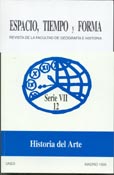 « Art Moves: Performativity in Time, Space and Form” is the title of the themed volume for the fourth issue of the journal that has recently entered a New Era. It will be guest-edited by Mieke Bal, Professor of Cultural Analysis at the University of Amsterdam, who has proposed the following thematic framework for this special issue :
« Art Moves: Performativity in Time, Space and Form” is the title of the themed volume for the fourth issue of the journal that has recently entered a New Era. It will be guest-edited by Mieke Bal, Professor of Cultural Analysis at the University of Amsterdam, who has proposed the following thematic framework for this special issue :
We care about art because it does something to us ; hence, its performativity can be taken for granted. But what is it that it does, and in which existential domains ? The phrase “art moves” is meant to bring together reflections on the performativity of art in its foundation in space and time, and the way it works through its form, with the moving image as an obvious but not exclusive case. Art works performatively in space, since visual art exists and functions in space, and therefore, also influences the space around it; even in an exhibition of still images such as paintings and drawings, but even more clearly sculptures, visitors walk around and hence, see the images in (their own) movement and if they are affected by them, in other words, moved, this happens in spatial movement. Images also move in time, since artworks not only stem from a time (usually in the past) and reach us from that past in the present, but also function in the time of the encounter, hence, in the present, and orient us towards the future. And, through the way the artwork looks, hence, through its form, it act upon us emotionally as well. In this dossier we will consider the three movements of the artwork together, whether it is a still or a moving work.
We are interested in original papers that address art’s moving quality theoretically and through close analysis of a specific case. We welcome contributions that consider one of these three movements especially, but also in connection to the other two. For example, one can examine what happens with an old master painting when the analysis focuses on the movement of exhibition visitors in the present. Or, a contemporary moving images can be brought into comparison with an older still image. Issues of composition, color and brush strokes may be examined together with rhythm, scale and materiality. We hope that each contribution will focus on a particular example of the three movements, and closely engage one work, or two works in comparison with one another. The conditions of movement must be spelled out, such as time and place of making, and time, place and conditions of viewing.
We invite all members of the academic community to submit original manuscripts for the fourth issue of Espacio, Tiempo y Forma. Serie VII. Historia del Arte, New Era. Submissions in English, Spanish and French are welcome for both the collection of articles and the themed dossier. The deadline for submissions is October 31, 2015. Proposals will be evaluated and accepted according to quality, but also spread and variety.
Once you have registered and consulted the Instructions for Authors, submit your proposal on our online journal platform :
http://revistas.uned.es/index.php/ETFVII/index
http://revistas.uned.es/index.php/ETFVII/about/submissions#authorGuidelines
If you have any enquiries, please contact the journal editor, Inés Monteira serie7.revista-etf@geo.uned.es; for queries regarding the e-platform, contact Jesús López revista-etf@geo.uned.es.
Espacio, Tiempo y Forma. Serie VII (Space, Time and Form. Serie VII) is a peer-reviewed academic journal published by the Department of History of Art at the School of Geography and History, UNED. It’s devoted to the study of Art History and is addressed to the Spanish and international scholarly community, as well as to professionals in the field of Art. It is published annually. The journal provides open access to its content beginning with the publication of the present online issue. Espacio, Tiempo y Forma. Serie VII is published online and in print and is indexed in Spanish and international Bibliographic Indexes and Databases (references up).

Leave a Reply
You must be logged in to post a comment.